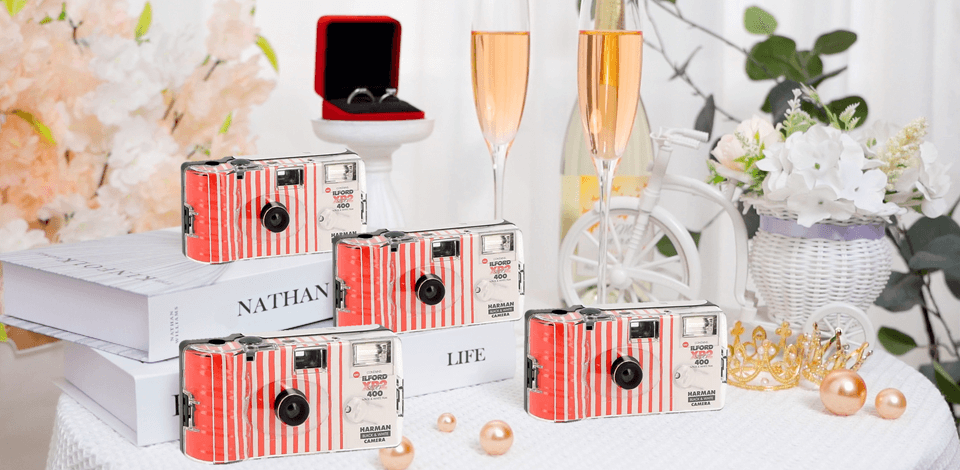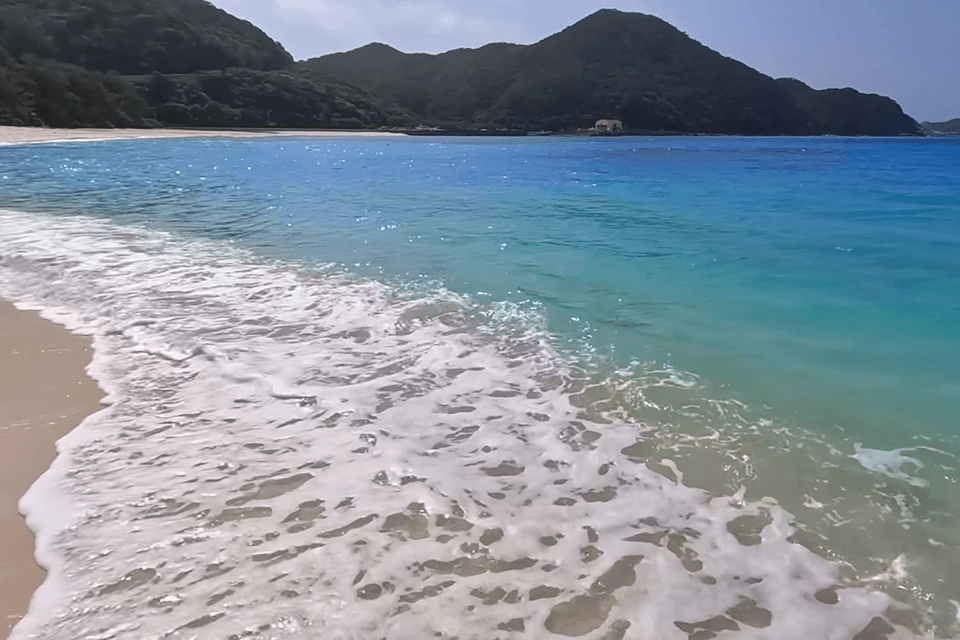
Have you ever heard that disposable cameras were initially created for tourists who did not want to lose or damage their expensive cameras? They were released in the 1980s and became quite popular due to their affordability and ease of use. Nowadays, they are often used not only during trips but also at weddings, parties, and other events. Some professional photographers even use them when working on projects that require them to achieve a nostalgic film effect.

Our Choice
★★★★☆ (4.5/5)
After testing several popular models, Fujifilm QuickSnap Flash is the best disposable camera for everyone. It allows to avoid exposure issues, comes with integrated flash, and supports consistent image quality in different lighting conditions.
To find the best disposable camera, I compared the available models in terms of image quality, intuitive functionality, and durability. Besides, I checked whether the cameras delivered excellent performance in various lighting situations.
The most reliable models are suitable for various shooting scenarios, so I was able to use them both at the beach and during evening gatherings.
Disposable cameras have streamlined functionality, come with fixed lenses, and support a limited number of exposures. What makes them different from digital cameras is that they do not have batteries and do not allow users to adjust settings. You just need to point them at your subject, capture a photo, and develop the film.
The key advantage is that they are perfect for capturing expected moments at weddings and other events. Using them, you take pictures with a strong cinematic feel.
|
Amazon:
|
10K+ bought in the past month
|
|
B&H:
|
700+ sold in the past year
|
|
Adorama:
|
2K+ bought in the past month
|

The Fujifilm QuickSnap Flash is a cool disposable camera that quickly became our preferred choice. Even though it’s the smallest model I tested, it comes with an intuitive flash switch, making it quite convenient to use.
What makes it different from other models that require you to manually charge the flash for every photo is the fact that this model allows you to use flash without recharging it. I was impressed by the disposable camera results in low-light conditions. This model utilizes 400 ISO film and requires more light than regular 800 ISO cameras.
The camera was delivered with the film, so I just had to turn the thumbwheel, use the viewfinder to create a well-balanced composition in the frame, and capture a shot. I mostly used this disposable camera in bright daylight without flash.
However, when taking photos indoors, I used flash. In either case, I was able to capture some decent photos. While the skin tones and whites had a barely noticeable magenta hue, the colors of landscapes looked perfect.
The flash range is about 3–12 feet. It’s a good disposable camera for capturing group photos and casual indoor pics. Make sure to always use flash when shooting indoors, otherwise, the output pics might be too dark. It’s suitable for daytime shooting and indoor use, which makes this vintage camera the top choice for those who are looking for a model with intuitive functionality.
|
Amazon:
|
500+ bought in the past month
|
|
B&H:
|
90+ sold in the past year
|
|
Adorama:
|
200+ bought in the past month
|

The Kodak FunSaver is an excellent film camera, so I wanted to test for a while. I have read many reviews and watched many videos praising this camera for its vintage feel and warm film hues. Besides, it looks like the best disposable film camera for those who travel a lot.
Even though it’s one of the most affordable options on this list, I was impressed by the output quality of the photos I captured using this model. The 800 ISO film is suitable for shooting at different lighting conditions. The images taken in bright sunlight did not look overexposed. I was also pleased by disposable camera quality. It helped me capture excellent shots even in poorly-lit environments.
The grain was barely noticeable, while the warm hues added a nostalgic, cinematic feel to my pictures. The integrated flash is useful for indoor shots. It has a range of 4–11.5 feet, which is a bit less impressive than the range of the Fujifilm QuickSnap. I tested this disposable camera in a poorly lit restaurant and was able to capture some decent shots, even though its details in shadows weren’t crisp. However, when I used them outdoors, I was able to capture sharp and bright pics, which makes this camera better than many other disposables.
|
Amazon:
|
200+ bought in the past month
|
|
B&H:
|
80+ sold in the past year
|
|
Adorama:
|
60+ bought in the past month
|

I decided to add this Fujifilm camera to my list even though I had already tested other models. This brand is well known for its excellent disposable cameras. When we went to Hawaii, the QuickSnap Waterproof helped us capture some truly unforgettable moments.
Released by one of the most popular disposable camera brands, it’s different from other models I tested, because it was designed for taking beach and underwater photos. Besides, it’s a great choice for those who just want to have some fun and capture pics at the pool.
It comes with Fujicolor Superia X-TRA 800 ISO film, making it perfect for shooting in brightly-lit environments. It’s better to use it in direct sunlight or underwater where there is still some light. What makes it different from a regular QuickSnap is that it does not have a flash, so it’s hardly the perfect choice for nighttime photos or shooting in shaded locations. However, when I used it as it was intended to be used, this disposable camera helped me capture bright colors and natural skin tones.
After taking 27 shots, I had to discard only two of them. Most fun disposable cameras fail to capture the first and the last shots. I used it at 15 feet underwater, and the camera surpassed my expectations. The colors were bright and bold, so my underwater pics had bright hues. The only shortcoming is that the pics captured with this camera require correction, otherwise, they will look too dark when printed. However, you can avoid this issue if you ask your lab to brighten them up a bit.
|
Amazon:
|
50+ bought in the past month
|
|
B&H:
|
40+ sold in the past year
|
|
Adorama:
|
10+ bought in the past month
|

My colleague Eva recommended the Ilford XP2 Black & White, as she used it repeatedly and liked its performance. She believes that it’s the best black-and-white disposable camera available today, so I was curious to check whether this model would meet my expectations. I like the fact that Ilford XP2 used C41 chemistry for development. It means that photographers can develop the film at any lab.
I was also impressed with the quality of photos I took on the beach in cloudy weather. Ilford XP2 captures deep black colors perfectly and maintains a high level of detail. The highlight transitions were perfect as well.
The grain looked nice, it added a classic film look to my photos without making them look unnatural. Despite these advantages, this disposable camera has some issues when I try to use it to capture beach scenes in direct sunlight. While I was mostly pleased with disposable camera picture quality, this model produces a barely noticeable rainbow effect in overexposed photos.
When using the in-built flash, I was able to achieve an impressive effect. Another advantage of this disposable camera is that if you want to recreate a black-and-white effect, you just need to put a red or orange filter over the lens to increase the contrast. I used this method a couple of times and was impressed by the output. It helped me capture darker skies, bright whites, and bold colors.
|
Amazon:
|
20+ bought in the past month
|
|
B&H:
|
15+ sold in the past year
|
|
Adorama:
|
5+ bought in the past month
|

The Lomography SUC100 Film grabbed my attention as it has a stylish design. You can buy models in different colors. While this aesthetic disposable camera looks quite nice, its main advantage is the color filters for the flash. Using them, I was able to experiment with various tones and moods when capturing my shots. While their functionality is quite basic, it makes this model fun to use.
This high quality disposable camera is similar to other models. However, after you finish a roll, you can replace it with another one instead of buying a whole new camera. I used the color negative version and experimented with flash gels. Using a red and blue gel, I was able to add a cinematic feel to my photos. With the help of a yellow filter, I added some warmth to my portrait photos.
The only noticeable shortcoming is that this model is more expensive than a regular disposable camera. However, as it is easy to reload and comes with handy flash gels, it’s a great option for those who enjoy film photography.
If you want to achieve better results:
Use natural light whenever possible. Most disposable camera models come with pre-configured settings and do not have manual controls. It means that they deliver excellent performance when there is plenty of light. When shooting indoors, take a position near a window or use a flash to avoid underexposure issues.
Stand close to your subject. Disposable cameras are commonly fitted with a plastic lens with a fixed focal length. If you want to take wedding pictures and avoid blur, do not use zoom. It’s better to approach the newlyweds or guests instead. When taking portrait photos, stay at a distance of 3–5 feet to capture your subject in focus.
Consider the flash range. The built-in flash is quite helpful, but its reach is typically quite limited. It’s usually around 3–10 feet. If your model is standing far away, you won’t be able to benefit from using the flash, and the output photo might turn out to be too dark. If you approach your model, you might capture an overexposed image.
Hold the camera steady. Since disposable models support lower shutter speeds, it might be challenging to take pictures without any blur. Stabilize the camera with both hands or put it on the table and press the shutter button carefully to avoid camera shake.
Frame your shot carefully. As a cheap disposable camera does not have a viewfinder displaying the scene with high accuracy, it might be challenging for you to see the image you are trying to capture. Make sure that there is enough extra space around the edges. This tip is especially important for those who are trying to capture a crowd at a party. It will allow you to avoid cropping out some crucial details.
Store and develop your film properly. Remember that film can be easily affected by heat and humidity. It’s essential to store your disposable camera in a cool, dry location. After finishing a roll, develop it without delays. Its quality is likely to degrade over time. Due to this, color accuracy and sharpness might suffer.
Besides the models that were included in the final version of my list, I tested many other disposable cameras. Even though most of them delivered decent performance, they had noticeable shortcomings that hindered my workflow.
Fujifilm Simple Ace – While it has good color reproduction and does not have noticeable exposure issues, it might be difficult to buy this model outside of Japan. If it were easier to order it, I would have included this in the list.
Agfa LeBox Ocean – Even though it was built specifically for underwater shooting, the quality of its outputs was rather inconsistent. The waterproof casing was perfect, but the lens captures softer disposable camera pictures, especially in deeper water.
Ilford HP5 Single Use – A black-and-white model with decent contrast, but it delivered less impressive performance in low light. As it does not have an integrated flash, indoor shots often were too dark.
All of these models have their selling points, however, I decided to include only the cameras that stood out among the rest for their consistent results when used in different shooting environments.
Trying to find the best disposable cameras, the FixThePhoto team and I tested several models to see whether they can be used in real-life situations. We wanted to check whether they had intuitive UIs and allowed users to capture spontaneous moments. We tested whether they were suitable for various lighting scenarios, checked the sharpness of output images, and considered the availability of integrated flashes.
We took photos in the studio and outdoors trying to capture a variety of scenes, from seascapes to evening gatherings. I was focusing on how each model rendered colors and contrast, especially when I was capturing black-and-white images.
Another thing that we considered during the test and rate process was intuitive functionality. As disposable cameras are designed for taking quick photos, we checked whether it was convenient to hold them when capturing shots and whether their viewfinders were easy to use.
We also focused on flash performance in poor light conditions and checked whether these cameras could be used in direct sunlight without any overexposure issues. When I decided to use a black-and-white disposable camera for vintage look, I tried using filters to enhance contrast and check whether they were suitable for different shooting scenarios.
When all the film was developed, we analyzed the outputs by comparing them side by side. Some models helped us capture pictures without any kind of blur, while others produced some softness around the edges.
We were also focused on consistency. We wanted to see whether a camera delivered great results in all sorts of shooting environments. This approach helped us identify the best quality disposable camera models and discover reliable options that produced high-quality pictures with little to no effort. It helped us capture plenty of beautiful moments.